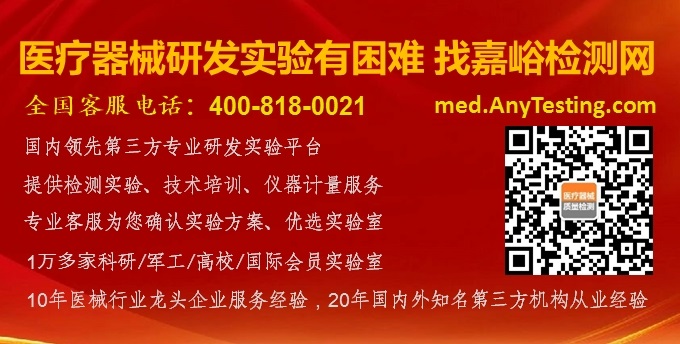随着医疗技术的飞速发展,组合医疗器械在临床应用中的重要性日益凸显。然而,因其复杂性,相关的法规政策也对其提出了更高的要求。
本文将对组合医疗器械进行深入剖析,以“欧盟医疗器械法规”为例,跟大家聊聊该法规政策对组合医疗器械的要求。
1、什么是组合医疗器械
组合医疗器械,顾名思义是由两个或者更多独立部分组成的医疗设备。在此文中“组合器械”是指含有药理或生物成分的医疗器械。其目的也是满足负责的医疗需求,并提供比单个产品更大的治疗效果。
2、组合医疗器械都有哪些类型
对于其组成形式,也是多样化的。如:药物洗脱支架、注入药物的伤口敷料、集成药物的自动注射器、预灌封注射器等。这里简单列举几种:
// 器械-药物组合器械
即(Device-Drug Combinations,DDCs,这类器械主要发挥医疗器械的功能,药物成分提供支持,如带有抗菌涂层的静脉导管。这种DDC 主要受 MDR 监管。
// 药物-器械组合器械
即(Drug-Device Combinations,DDCs),由一个医疗器械和一个医药产品组成,如注射特定药物的自动注射器。这种组合医疗器械 受MDR和MPR(Medicinal Products Regulation)的监管。
// 器械-器械组合
即(Device-Device Combinations,DDC),这种组合涉及两种或两种以上的医疗器械,每种器械都能达到预期目的。例如,胰岛素泵和连续血糖监测仪的组合。这种DDC 受 MDR 监管。
除此之外,还有边界产品——这类产品模糊了医疗器械、医药产品和其他监管类别之间的界限。监管机构会根据具体情况对此类产品进行评估,以确定其分类和适用的监管途径。
当然还有一些根据用途的分类:如:
.影像诊断类组合医疗器械:包括X射线机、超声诊断仪、核磁共振仪等。
.临床治疗类组合医疗器械:包括多功能手术床、麻醉机、呼吸机、血液透析机等。
.体外诊断类组合医疗器械:包括全自动生化分析仪、免疫分析仪、血细胞分析仪等。
.高值耗材类组合医疗器械:包括人工关节、心脏起搏器、血管支架等。
.低值耗材与设备类组合医疗器械:包括医用缝合线、注射器、采血器等。
MDR 强调,组合器械的分类应考虑其主要作用模式 (Primary Mode Of Action,PMOA)。这意味着器械的预期目的和主要功能是决定其监管途径的关键。根据分类规则第 14 条,欧盟 MDR 规定的大多数符合产品都属于 III 类。
3、MDR下组合医疗器械的监管如何呢?
欧盟对组合医疗器械实行统一的监管框架,主要是由MDR确定。该法规于 2021 年 5 月取代了之前的MDD。MDR 涵盖包括组合器械在内的各种医疗器械,以确保患者安全和产品功效。
对此,MDR也列出了制造商必须遵守的具体准测和要求,虽没有具体提及组合产品,但在第 1(8) 和 1(9) 条中规定了制造商必须使用的法规要求:
●"Any device which, when placed on the market or put into service, incorporates, as an integral part, a substance which, if used separately, would be considered to be a medicinal product as defined in point 2 of Article 1 of Directive 2001/83/EC, including a medicinal product derived from human blood or human plasma as defined in point 10 of Article 1 of that Directive, and that has an action ancillary to that of the device, shall be assessed and authorised in accordance with this Regulation. However, if the action of that substance is principal and not ancillary to that of the device, the integral product shall be governed by Directive 2001/83/EC or Regulation (EC) No 726/2004 of the European Parliament and of the Council, as applicable. In that case, the relevant general safety and performance requirements set out in Annex I to this Regulation shall apply as far as the safety and performance of the device part are concerned".
●"Any device which is intended to administer a medicinal product as defined in point 2 of Article 1 of Directive 2001/83/EC shall be governed by this Regulation, without prejudice to the provisions of that Directive and of Regulation (EC) No 726/2004 with regard to the medicinal product. However, if the device intended to administer a medicinal product and the medicinal product are placed on the market in such a way that they form a single integral product which is intended exclusively for use in the given combination and which is not reusable, that single integral product shall be governed by Directive 2001/83/EC or Regulation (EC) No 726/2004, as applicable. In that case, the relevant general safety and performance requirements set out in Annex I to this Regulation shall apply as far as the safety and performance of the device part of the single integral product are concerned."
总的来说,欧盟对组合医疗器械的法规主要依据《医疗器械指令》和《医疗器械法规》。这些法规要求企业进行产品注册、生产质量体系和临床试验的审核,以确保产品的安全性和有效性。
●在生产质量体系方面,欧盟要求企业建立并维护一个有效的生产质量体系,以确保产品的质量。企业需要制定并执行严格的生产流程和质量标准,并对生产过程中的关键环节进行严格控制。
●在临床试验方面,欧盟要求企业进行临床试验以证明其产品的安全性和有效性。临床试验必须由独立的医学机构进行,并需要遵守严格的数据保护和伦理标准。
●在风险评估方面:医械商必须进行风险评估,以确定并降低其组合器械的潜在风险(其中包括评估与器械和药物或生物制剂成分相关的风险)。
●在符合性评估方面:医械商必须聘请公告机构对其产品是否符合MDR进行评估和认证。这一过程包括审查技术文件、风险管理和临床评估。
●唯一设备标识 (UDI):根据 MDR,制造商必须为其器械分配一个 UDI,以便进行追溯和上市后监管。
此外,欧盟还要求企业进行预生产质量体系和上市后监督审核,以确保产品的安全性和有效性。【预生产质量体系审核包括对企业生产设施和生产流程的评估,以确保其符合相关标准和规定。上市后监督审核则包括对产品上市后的监督和监测,以确保产品的质量和安全性。】
最后
总之,欧盟法规对组合医疗器械的规定和定义非常严格,要求企业进行全面的产品注册、生产质量体系和临床试验等审核,以确保产品的安全性和有效性。这对于组合医疗器械的开发和上市提出了很高的要求,但也为患者的安全提供了有力的保障。




